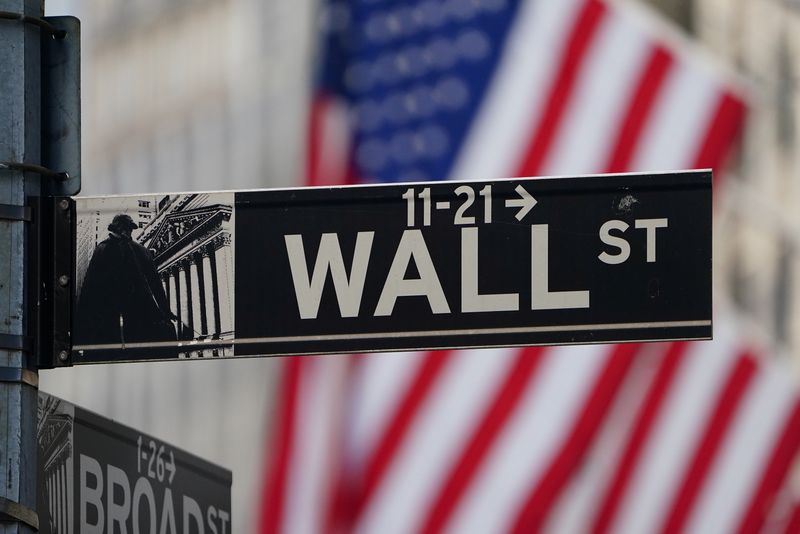By Carolina Mandl and Davide Barbuscia
NEW YORK (Reuters) - Hedge funds have reduced bearish bets in U.S. Treasuries after a change in market expectations for interest rate cuts this year, but the sheer growth of the government debt market is expected to spur more trading in the future.
Some hedge funds short Treasury futures as part of the so-called basis trade, a bet that exploits the price difference between a Treasury security and its derivative in the futures market. The strategy, where returns are juiced by leverage, has gained popularity thanks to high demand for Treasury futures by asset managers. Hedge funds take the other side of that trade, selling futures contracts.
Now, as investors re-calibrate their bond bets on expectations that interest rates will remain higher for longer, asset managers' demand for futures has declined, reducing the profitability of the trade, market participants have said.
Three hedge funds told Reuters that the once eye-popping returns on the basis trade have declined, making it a less interesting trade, although still profitable. The portfolio managers spoke on condition of anonymity because their trades are not public.
Currently gains are roughly 10% lower than they were six months ago, the chief investment officer of one of the funds said.
Traders also said that the strategy had recently become too crowded as high returns have lured more participants. As a consequence, the higher supply of Treasury futures shorts by hedge funds together with a lower demand from asset managers for the derivative has shrunk the price differential portfolio managers have been exploiting.
Asset managers' long positions for 10-year Treasury futures rose sharply over the past couple of years until a record peak in August last year. In recent months, however, 10-year futures long positions have dropped sharply, according to Commodity Futures Trading Commission data.
Somewhat similarly, leveraged funds' short bets on the benchmark futures contract have been rising steeply since mid-2022, but have dropped sharply this year.
A basis trade investor, speaking on condition of anonymity, said reduced demand for Treasury futures in recent months was also likely the result of asset managers investing more heavily in corporate debt as they seek higher yields.
SOURCE OF DEMAND
Regulators have focused on the basis trade in recent years because a fast unraveling of these positions is seen as a potential source of volatility, as seen in March 2020 when the Treasury market seized up for lack of liquidity.
In particular, there is concern among regulators that the trade could be a source of financial stability risk because hedge funds must provide more collateral to back their positions when volatility rises. This can hurt their balance sheets and the banks that provided the funding.
At the same time, the basis trade is seen as a vital source of demand for Treasuries at times of supply and demand imbalances.
In a March 2024 paper, Fed researchers noted how peaks in basis trade activity - between 2018 and 2020 and then from the second half of 2022 until now - coincided with periods of large Treasury debt sales and with the Fed reducing the size of its bond holdings.
These dynamics cause Treasury prices to fall compared to futures, where demand from asset managers is high because of better liquidity than in the cash market.
Because of expectations of large Treasury issuance for the foreseeable future, the recent setback for basis trades is likely to be only temporary, market participants said.
More supply is expected to make cash Treasuries, or bonds traded in the secondary market, cheaper relative to futures contracts, widening the gap between the two positions and therefore attracting more relative value traders, the chief investment officer of a hedge fund said.
On the supply side, government debt issuance could reach $3.9 trillion in 2024 alone, the Securities Industry and Financial Markets Association estimated earlier this month. Meanwhile, traditional market makers such as bank dealers continue to struggle to keep up with the ballooning Treasury market because of capital rules introduced after the 2008 financial crisis.

"The growth of these trades is just natural to me because we're in this market where traditional intermediation in the Treasury market is not as it used to be," said Jay Barry, co-head of US Rates Strategy at JPMorgan.
"Over time, the basis position is going to be bigger than it was in 2019-2020 as the Treasury market continues to grow," he said.